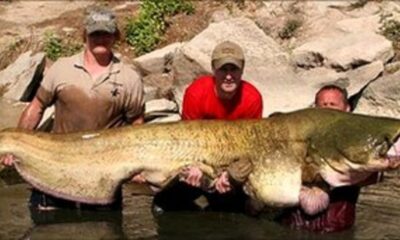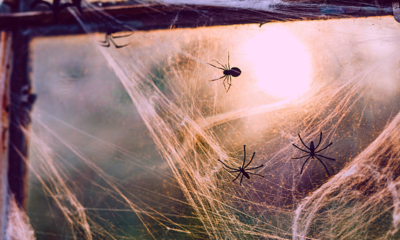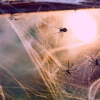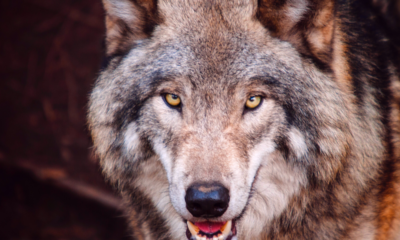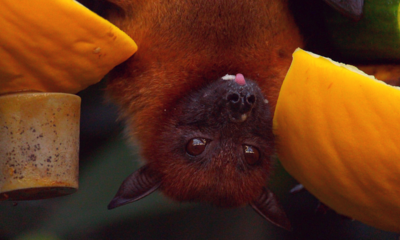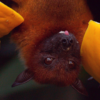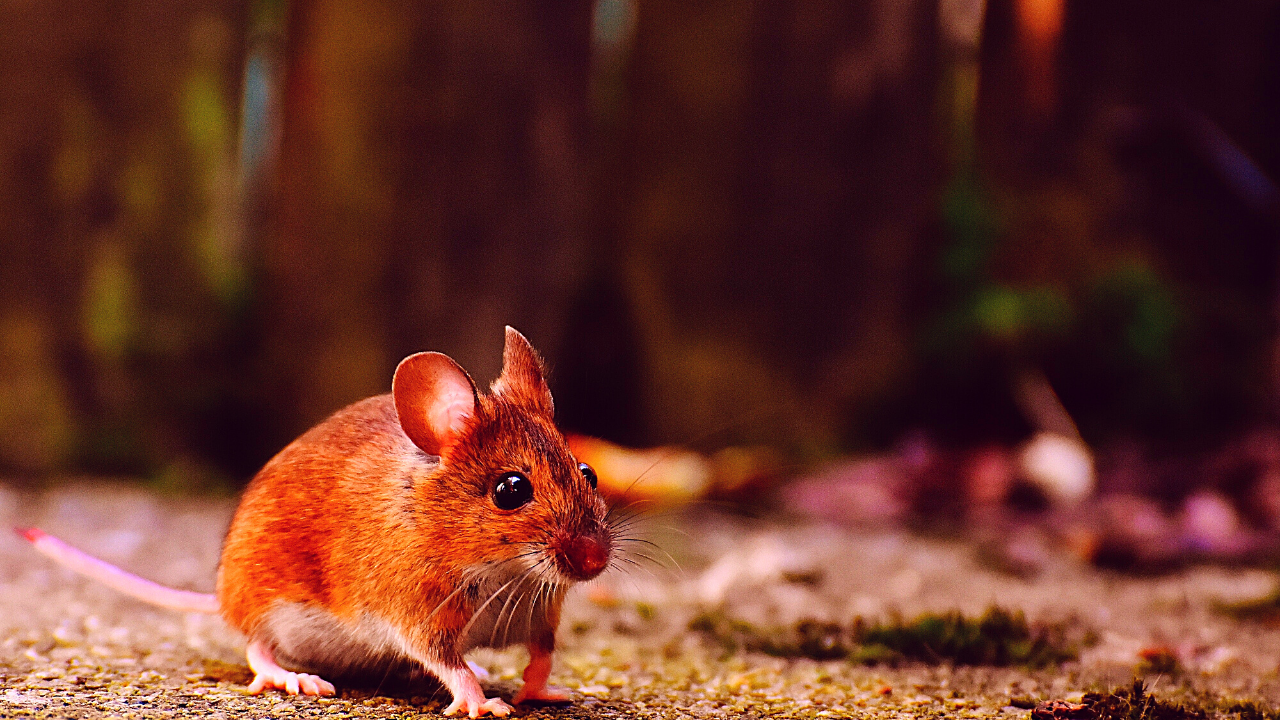
Animals
10 Biggest Rats In the World
When we think of rats, Tom and Jerry’s Jerry is the first rat that comes to our mind and co-incidentally, actual rats are also as mischevious as the one in cartoon. Ironically, a group of rats is also called a mischief!
Rats originated in Asia and Australia but are now found in all parts of the world. Infact, there are over 60 species of rats, according to the Integrated Taxonomic Information System (ITIS) and getting rid of them is not as easy. Although their size is small and they look rather cute, rats are carriers of innumerable diseases.
According to Encyclopedia Britannica, rats measure around five inches in length. Chicago has the highest number of rats in the world followed by Washington, D.C. London and Paris also have a huge rat-infestation.
Fun Fact
According to a study by Humboldt University, Germany, neurobiologists tickled the rat’s back, stomach and their tails to witness their reaction. The result of this study was that when touched or tickled, these rats give out a very high-pitched chirp of laughter.
10. Swedish Viking Rats
Weight: Upto 2.2 lbs
Location: Sweden
In 2014, a huge rat emerged in a family’s kitchen in Stockholm and immediately made headlines. This huge rat was later re-named as Ratzilla. The pest controllers who caught this Viking monster said that that was the biggest rat they had ever seen.
Measuring 15 inches, excluding the tail, had got into this family’s basement after making its burrow through the wood and cement. The family got suspicious when their cat refused to go into the basement.
The family could hear noises of the rat from behind kitchen appliances throughout the day. When the family members tried to get rid of this monster rat, it grew stronger and ran all over in the kitchen. Even though the family had put a trap to catch this humongous rat, it managed to escape with the trap calmped around its neck!
9. Bosavi Woolly Rat
Weight: 3.3 lbs
Location: Papua New Guinea
While on a film-making expedition to a remote rainforest in New Guinea, a Smithsonian Institution biologist in 2009 discovered this new species of rats. Believe it or not, this discovery was made in the crater of an extinct volcano named Mount Bosavi.
This rat weighed 3.5 pounds and measured a whopping 32 inches. Counted among the world’s biggest rats, the Bosavi Wolly rat has a thick wolly fur and they are silvery gray in colour. Considered to be one of
These rats love to eat leaves and roots and they build their burrows beneath rocks and inside trees. These rats are yet to receive their formal scientific name.
8. Chinese Bamboo Rats
Weight: 4.2 lbs
Location: Southern China
China has a bamboo belt where rats are raised for fur and meat. The rats that are found here are born huge. Once these rats hit the scale at nine pounds, they are sent away to the markets for selling purposes.
The Chinese Bamboo rats are cooked into delicious meals and it is astonishing to know that people love to eat these rats and pay upto four times the price of chicken and pork. Some believe that eating these rats also cures baldness.
Some people love to pet these rats as they look like bigger versions of a guinea pig. Infact, two vloggers in China have been breeding these rats from a long time as a source of food. These vloggers say that the Chinese rats were too cute to be killed for food!
These cute and furry rats love to eat the roots of plants and bamboo, cane and tapioca.
7. Mallomys Giant Rats
Weight: 4.4 lbs
Location: New Guinea
Weighing as much as 4.4 pounds, these rats are found in New Guinea. Not much is known about the behaviour of these rats except that they love eating grass and other plants.
Scientists believe that these rats are new and say that when compared with a typical city rat, these rats are nearly five times its size!
6. Gambian Giant Pouched Rat
Weight: 9 pounds
Location: Florida
After an accidental release by a pet breeder, the Gambian Giant Pouched got established in Florida in 1999. They are now found in large numbers in central and southern Africa.
These rats grow upto 3 feet long and are among the largest muroids in the world. They are even kept as pets by some people but somehow, over time, they find an escape.
Researchers believe that if these rats reach the US, they could pose a threat to the Florida fruit industry. Besides, these rats also pose a risk of spreading diseases like monkeypox among others. The import of these rats is therefore banned in the US after an outbreak of monkeypox in 2003.
5. Nutria
Weight: 22 lbs
Location: North America and Asia
Weighing around 22 pounds and measuring upto 24 inches in length, the Nutria rats belong to South America. According to the U.S. Fish and Wildlife Service., they found their homes in South America between 1899 and 1930 through the fur industry.
These rats are also known as coypu or swamp rats as they mostly survive in areas where freshwater is available. They resemble a huge rat and are very good swimmers. In fact, they can remain submerged in water for five minutes.
At one point in time, these rats were native only southern South America and were domesticated as fur animals and also transplanted around the world.
4. Capybara
Weight: 146 lbs
Location: South America
Found mostly in northern and central South America, the capybaras are considered to be one of the biggest rats in the world. A small population of these rats is also found in Florida.
The adult capybaras can grow up to a massive 4.40 feet in length and they stand tall at 24 inches. These rats weigh a massive 146 lbs.
The capybaras are very good swimmers. Their bodies are pig-shaped and are very well suited for swimming in water bodies. The most astonishing fact about these rats is that they feed on their own feces early in the morning! During this time of the day, their feces is rich in proteins and contains a lot of microbes.
For the capybaras, the grass gets difficult to digest and so by eating their own feces, these rats are able to digest their food easily.
3. Castoroides
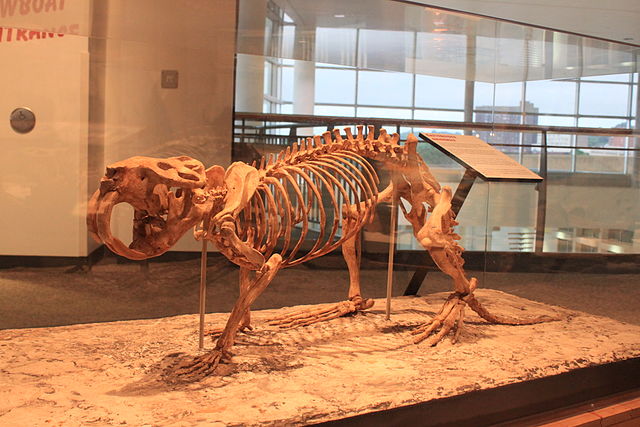
Weight: 276 lbs
Location: Southeastern US
Castoroides, also known as giant beavers, are now an extinct species of rats. It is believed that they lived in North America during the Pleistocene.
Attaining lengths of upto 8 feet, these rats weighed 200 pounds and had long and shaggy hair. These rats had very strong skull and teeth. A similar kind of giant beaver, known as Trogontherium, is found in Europe and has a lot of resemblance with the Castoroids.
2. Giant Hutia
Weight: 440 lbs
Location: West Indies
Once found in the West Indies, the giant Hutias are now an extinct species of rodents. Researchers dug deep into the fossils and found out about these rats. However, seven living species of this rat now lives in Cuba and two species are believed to be living in the Humboldt National Park.
When compared with the capybara, these rats are nearly twice their size and much smaller than the Josephoartigasia monesi, which is the largest rodent known. These animals were used as a rich food source by aboriginal humans.
Giant Hutias do not make their burrows and are mostly terrestrial. They love to make their houses in tree nests and cavities. They also love to live inside deep rock holes and caves.
1. Josephoartigasia
Weight: 2204 lbs
Location: Early Pliocene to Early Pleistocene period
Josephoartigasia is an extinct species of rats that dates back millions of years. As for their weight, it was estimated to be as much as 1,000 kilograms and they were three meters
In the present day, this species of rats is compared with the living pacarana. One of the doctors at a university in Montreal said that the mathematical models that were used during that time to calculate the rodent’s size perhaps overestimated its size.
According to studies and reports conducted in recent times, it is believed that the rodent had big teeth in the front that it used mainly for defense purposes.
As per studies, it is believed that this rodent chewed on soft vegetation and lived around forest communities, an estuarine environment or a delta system.
Trisha Katyayan is an experienced journalist who has print-media background and loves to research, organize and curate factual information in a presentable way.


